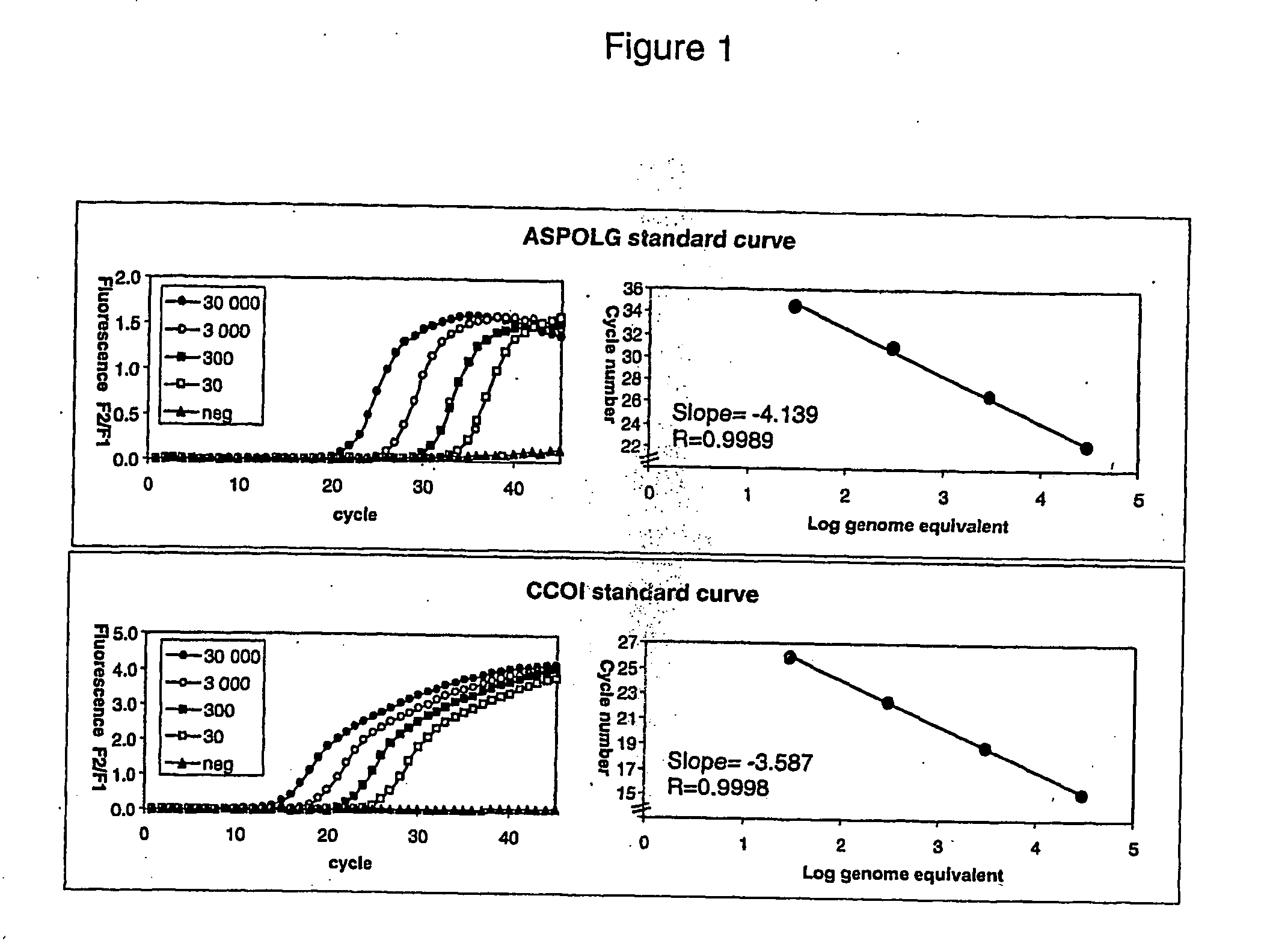Diagnosis of sepsis using mitochondrial nucleic acid assays
a sepsis and mitochondrial nucleic acid technology, applied in the field of sepsis diagnosis or prognosis assays, can solve the problems of sepsis-induced hypotension, severe sepsis, septic shock, etc., and achieve the effect of preventing sepsis from affecting the patient and preventing the patient from recurrence and recurren
- Summary
- Abstract
- Description
- Claims
- Application Information
AI Technical Summary
Benefits of technology
Problems solved by technology
Method used
Image
Examples
example 1
[0043] Sepsis is associated with a significant decrease in blood cell mtDNA content. An assay is provided to monitor mitochondrial DNA levels, for example in subjects with sepsis. Methods of the invention may be adapted to assess the efficacy of anti-sepsis drugs and to diagnose sepsis in patients having sepsis or in individuals suspected to be at risk for sepsis.
[0044] Materials and Methods
[0045] Longitudinal blood samples can be collected from a subject. Total DNA can be extracted from blood cells and both a nuclear gene and a mitochondrial gene can be amplified and quantified by Real-Time PCR using hybridization probes. The mtDNA levels can be expressed as a ratio of the mitochondrial over nuclear DNA (mtDNA / nDNA).
[0046] Sample Collection and DNA Extraction
[0047] Buffycoats can be collected from blood samples and stored frozen at −70° C. until used. Total DNA can be extracted from 200 μL of buffycoat using the QIAamp DNA Blood Mini kit (QIAGEN, Missisauga, Ontario, Canada) ac...
example 2
[0053] LPS-induced sepsis was used in an animal model to detect sepsis. Table 1 shows the mitochondrial DNA (mtDNA) to nuclear DNA (nDNA) ratio in lung and liver tissues 6 hours and 24 hours following administration of LPS to mice.
TABLE 1Relative Amount Of Mitochondrial DNA In Mouse Tissue6 h And 24 h Following Administration Of LPS.mtDNA / nDNA ratiotreatmenttissueNmean ± SDControlslung60.29 ± 0.05LPS-6 hlung60.23 ± 0.04LPS-24 hlung60.25 ± 0.06Controlsliver32.40 ± 0.99LPS-24 hliver32.50 ± 0.22
[0054] The results indicate a strong trend (P=0.06) toward a lower mtDNA / nDNA ratio in the lung tissue of animals with LPS-induced sepsis.
PUM
| Property | Measurement | Unit |
|---|---|---|
| Time | aaaaa | aaaaa |
| Ratio | aaaaa | aaaaa |
Abstract
Description
Claims
Application Information
 Login to View More
Login to View More - R&D
- Intellectual Property
- Life Sciences
- Materials
- Tech Scout
- Unparalleled Data Quality
- Higher Quality Content
- 60% Fewer Hallucinations
Browse by: Latest US Patents, China's latest patents, Technical Efficacy Thesaurus, Application Domain, Technology Topic, Popular Technical Reports.
© 2025 PatSnap. All rights reserved.Legal|Privacy policy|Modern Slavery Act Transparency Statement|Sitemap|About US| Contact US: help@patsnap.com

